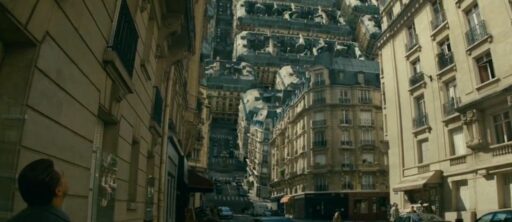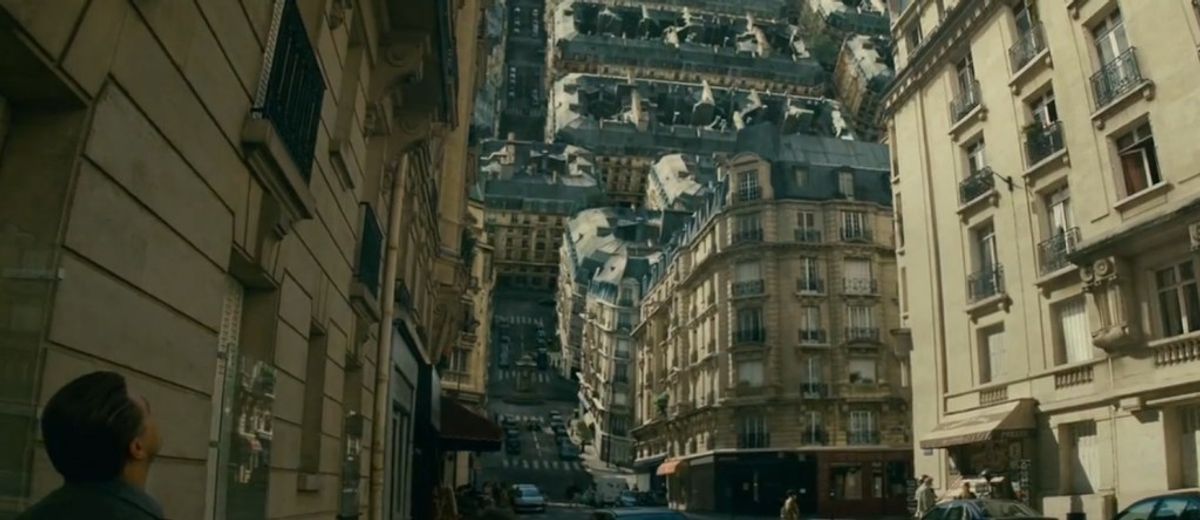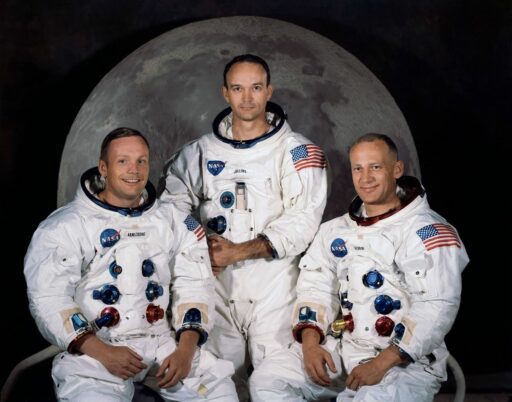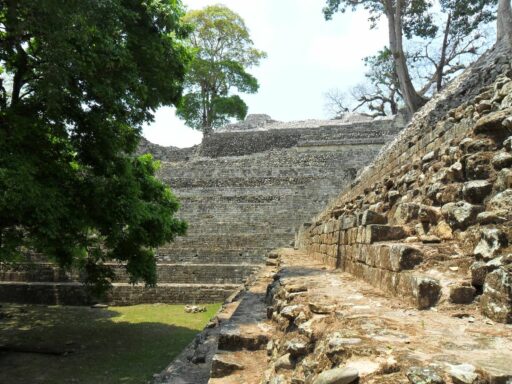In the vast expanse of cinematic storytelling, few filmmakers captivate the imagination and provoke thought quite like Christopher Nolan. His masterful exploration of time, identity, and reality across films such as The Prestige, Inception, Interstellar, and Tenet has not only redefined genres but also offered a mirror to our deepest existential inquiries. Delving into Nolan’s films is more than an exercise in film analysis; it’s a journey into the human condition, challenging us to consider our perceptions of reality, the flow of time, and the essence of our existence.
Key Takeaways
- Christopher Nolan’s films are renowned for their intricate narratives and complex exploration of themes such as time, identity, and reality.
- Nolan uses unconventional storytelling techniques, including non-linear timelines and ambiguous endings, to engage the audience’s intellect and emotions.
- The visual and technical aspects of Nolan’s movies, such as his use of IMAX and practical effects, contribute to the immersive and thought-provoking nature of his work.
- The philosophical underpinnings of Nolan’s films invite viewers to reflect on the nature of their own existence and the constructs they accept as truth.
- Through films like Tenet, Nolan challenges our traditional understanding of time and encourages us to embrace the endless possibilities that lie in the intersection of our dreams, realities, and the time that shapes them.
The Architect of Dreams: Dissecting Nolan’s Narrative Complexity


The Labyrinth of ‘Inception’: Dreams Within Dreams
Christopher Nolan’s Inception is a cinematic journey through the subconscious, where the architecture of dreams becomes a playground for the extraordinary. The film’s narrative is a complex maze of layered realities, each with its own set of rules and risks. At the heart of this labyrinth lies the concept of dream infiltration, a process that the protagonist, Cobb, and his team of specialists undertake to plant an idea deep within a target’s mind.
The film introduces viewers to five distinct levels of dreaming, each more intricate and unstable than the last. As the team descends through these levels, the stakes escalate, and the lines between dream and reality blur:
- Level 1: The Cityscape – A rain-soaked metropolis where the heist begins.
- Level 2: The Hotel – A zero-gravity battleground of wits and perception.
- Level 3: The Snow Fortress – A militarized subconscious where defenses are at their highest.
- Level 4: Limbo – An unconstructed dream space of raw subconscious.
- Level 5: The Kick – The synchronized escape back to reality.
In the world of Inception, the deeper one goes, the more the mind can unravel, creating a perilous journey not just for the characters but for the audience as well. The film’s exploration of these dream levels challenges our understanding of consciousness and the power of ideas.
The visual spectacle of Inception is matched by its intellectual ambition. Nolan crafts a story that is as much about the human psyche as it is about the stunning visual effects that bring these dreamscapes to life. The film’s conclusion leaves us pondering the nature of reality, a testament to the enduring impact of Nolan’s vision.
The Chronological Conundrums of ‘Memento’
Christopher Nolan’s ‘Memento’ is a masterclass in narrative disorientation, presenting a story that unfolds in reverse chronological order. This method is not just a stylistic choice but a way to embody the protagonist’s condition—Leonard’s short-term memory loss—into the film’s very structure. As viewers, we experience the confusion and piecemeal reconstruction of events just as Leonard does, with each scene shedding light on what preceded it, rather than what follows.
The film’s structure can be broken down into two sequences: black-and-white scenes that proceed in chronological order, and color scenes that are shown in reverse. This dual narrative stream converges in a single, impactful moment that redefines the entire story:
- Black-and-white scenes: Leonard in his motel room, providing exposition through phone conversations.
- Color scenes: The main narrative, revealing Leonard’s interactions and the events leading to his wife’s death, shown in reverse.
Memento’s ending forces us to reconsider everything we’ve witnessed, as the revelation of Leonard’s actions and motivations casts a new light on his quest for truth.
By intertwining these sequences, Nolan creates a complex puzzle that the audience must piece together, much like Leonard attempts to piece together his own fragmented memories. The film’s conclusion, which loops back to the beginning—or rather, the end of the chronological narrative—leaves us questioning the nature of truth and the reliability of our own memories.
The Dual Realities of ‘The Prestige’: Obsession and Illusion
Christopher Nolan’s The Prestige is a labyrinthine tale of two magicians whose rivalry spirals into an obsession with devastating consequences. The film masterfully intertwines the real with the illusory, challenging the audience to discern the difference. At the heart of this narrative is the enigmatic machine of Nikola Tesla, a device that blurs the lines between science and magic, life and artifice.
The Prestige is not just a story about magic tricks but a profound exploration of identity and sacrifice. The pivotal moment when Robert Angier uses Tesla’s machine is a testament to the lengths one will go to achieve greatness, even at the cost of one’s humanity. This act of replication and self-destruction raises questions about the essence of self and the price of ambition.
- The rivalry between Angier and Borden
- The role of Tesla’s machine in the narrative
- The philosophical questions of identity and sacrifice
Nolan’s narrative compels us to examine the constructs we accept as truth and the subjective nature of reality. The Prestige, through its complex characters and intricate plot, becomes a mirror reflecting our own desires, fears, and the pursuit of personal authenticity.
Time as a Canvas: Nolan’s Cinematic Manipulation of Temporality


The Cosmic Dance of ‘Interstellar’: Love and Relativity
Christopher Nolan’s Interstellar weaves a complex tapestry of human emotion against the backdrop of space exploration and the enigmatic laws of physics. At its heart, the film is a poignant exploration of the sacrifices we make for love, set within the mind-bending realities of time dilation and black holes.
In the journey of Matthew McConaughey’s character, Cooper, we see the tension between the drive to secure humanity’s future and the pull of personal connections. The narrative is a testament to the unbreakable bonds that define our existence, as Cooper’s odyssey through the cosmos mirrors our own quest for meaning and legacy.
The speculative science in Interstellar, while rooted in theoretical physics, serves as a critical plot device that enriches the story with a layer of authenticity. It challenges us to contemplate the vastness of the universe and our place within it.
The film’s portrayal of time as a malleable dimension, particularly through the phenomenon of time dilation near a black hole, adds a profound depth to the narrative. This concept is not just a plot mechanism but also a metaphor for the relativity of human experience—how moments can stretch into lifetimes and lifetimes can condense into moments, all through the lens of love.
Reversing the Irreversible in ‘Tenet’: The Art of Time Inversion
Christopher Nolan’s ‘Tenet’ presents a cinematic paradox where time flows in both directions, challenging the audience to rethink the nature of cause and effect. The film’s central premise revolves around ‘inversion,’ a process that allows objects and people to move backward through time, creating a narrative that is as much a puzzle as it is a story.
In ‘Tenet’, the linearity of time is not just disrupted; it’s completely inverted, forcing viewers to navigate a world where the future can shape the past.
The complexity of ‘Tenet’ is not solely in its plot but in the philosophical implications it raises. Nolan uses time inversion to delve into themes of destiny, free will, and the essence of human resilience. The protagonist’s journey is less about the mechanics of time and more about the human capacity to adapt and make meaningful choices in the face of insurmountable odds.
- The Protagonist’s pivotal turnstile moment
- The labyrinthine narrative structure
- The thematic resonance of inversion
Nolan’s narrative is a testament to the endurance of the human spirit, suggesting that our perception of time is less important than the actions we take and the reasons behind them.
The Non-Linear Storytelling of ‘Dunkirk’: Converging Timelines
Christopher Nolan’s ‘Dunkirk’ is a masterful exploration of time and perspective, weaving together three distinct narratives set on land, sea, and air. The film’s structure defies traditional storytelling, as each storyline operates within its own temporal framework, only to converge in a climactic synthesis.
The interplay of these timelines creates a visceral tapestry of the Dunkirk evacuation, challenging the audience to piece together the puzzle as the film progresses. This non-linear approach not only heightens the tension but also reflects the chaotic and fragmented nature of war.
- Land: One week
- Sea: One day
- Air: One hour
By presenting the events of Dunkirk through this triptych of time, Nolan crafts a narrative that is as disorienting as it is immersive, compelling viewers to experience the desperation and urgency of the soldiers, sailors, and airmen involved.
The film’s temporal disjunctions serve a greater purpose than mere narrative complexity; they underscore the shared humanity of the individuals caught in the maelstrom of conflict. As timelines converge, so too do the fates of characters, culminating in a poignant reminder of the collective effort and sacrifice inherent in survival.
The Human Element: Exploring Identity and Existence in Nolan’s Films


The Quest for Immortality in ‘The Prestige’
At the heart of ‘The Prestige’ lies a profound commentary on the human condition, where the fantastical elements serve as a medium to delve into the depths of human ambition and the essence of existence. The film’s narrative intricately weaves through the themes of identity, sacrifice, and the relentless pursuit of greatness, encapsulated by Robert Angier’s decision to use Tesla’s machine—a decision that signifies more than a mere plot twist, but a dance with the very nature of self.
Nolan’s exploration of identity in ‘The Prestige’ is a precursor to the themes he would revisit in his later works. The film’s pivotal moment, where Angier confronts the consequences of using the machine, not only raises questions about the authenticity of existence but also the sacrifices one is willing to make in the quest for recognition and fulfillment.
In ‘The Prestige’, Nolan invites the audience to ponder the essence of true identity. Is it defined by our physical existence, or does it reside in the continuity of our consciousness? The repeated sacrifices of Angier’s clones blur the lines between self-preservation and self-destruction, echoing the paradoxes we face in our own lives.
The Fragility of Memory in ‘Memento’
Christopher Nolan’s ‘Memento’ is a profound exploration of the human psyche, delving into the fragility of memory and its impact on identity. Leonard’s journey, marked by short-term memory loss, becomes a metaphor for the unreliable nature of our own recollections. The film’s reverse chronological structure mirrors the protagonist’s disorientation, compelling viewers to experience the uncertainty of a narrative pieced together from fleeting moments.
- Leonard’s fractured memory and reliance on external artifacts to construct his identity.
- The subjective nature of understanding, shaped by personal biases and incomplete information.
- The film’s conclusion, which reveals the manipulation of memories and the possibility of self-deception.
At its core, ‘Memento’ challenges the conventional understanding of time and narrative progression, immersing the audience in a world where the past is elusive, and the future is a puzzle solved in reverse.
Nolan’s masterpiece is not just a psychological thriller but a philosophical inquiry that resonates with anyone who has ever questioned the stories they tell themselves. It is a reminder that our memories, often considered the bedrock of our identity, are as malleable as they are essential. ‘Memento’ remains an iconic film in the pantheon of cinema, a testament to Nolan’s ability to weave complex narratives that both entertain and provoke thought.
The Search for Meaning in ‘Interstellar’
Christopher Nolan’s ‘Interstellar’ is a tapestry of cosmic ambition and intimate human drama. The film delves into the essence of human connection and our place in the universe, as Earth’s future hangs in the balance. The narrative follows Cooper’s odyssey through space and time, juxtaposing his quest to save humanity with the heart-wrenching desire to return to his children.
- The profundity of relationships and the sacrifices made for love.
- The ethical complexities of personal versus the greater good.
- The speculative science that prompts reflection on time, love, and legacy.
In the vastness of space, ‘Interstellar’ finds its core in the simplicity of a father’s promise and the complexity of cosmic possibilities.
Critics have offered varied takes on the film’s exploration of these themes. While some praise its visual spectacle and ambitious scope, others point out moments of lackluster dialogue and pacing. Yet, the consensus acknowledges Nolan’s ability to weave a narrative that is as much about the human spirit as it is about the science fiction that propels the story forward.
Visual Poetry and Technical Innovation in Nolan’s Filmmaking


The Aesthetic of Ambiguity: Crafting Visual Metaphors
Christopher Nolan’s films are renowned for their visual metaphors that encapsulate the essence of his storytelling. The wobbling top in ‘Inception’, for instance, is not just a plot device but a symbol of the film’s central theme: the fine line between reality and dreams. This ambiguity invites the audience to engage in a deeper dialogue with the film, long after the credits have rolled.
In ‘Tenet’, Nolan takes this approach to new heights, weaving a narrative where time itself becomes a metaphor for the characters’ journey. The concept of inversion in ‘Tenet’ is not just a narrative twist but a visual metaphor for the cyclical nature of time and the interconnectedness of cause and effect.
Nolan’s visual metaphors are not mere embellishments; they are integral to the narrative structure, challenging viewers to unravel the layers of meaning.
The table below highlights key visual metaphors in Nolan’s films and their thematic significance:
| Film | Visual Metaphor | Thematic Significance |
|---|---|---|
| Inception | Wobbling Top | Reality vs. Dream |
| Tenet | Inversion Battles | Cyclical Nature of Time |
| The Prestige | Duplicated Hats | The Cost of Obsession |
These visual metaphors serve as a testament to Nolan’s ability to craft films that are as intellectually stimulating as they are visually spectacular.
The Choreography of Action: From ‘Inception’ to ‘Tenet’
Christopher Nolan’s films are renowned for their intricate action sequences, where each movement is meticulously crafted to enhance the narrative. ‘Inception’ introduced us to the concept of a dreamscape where physics is defied, and ‘Tenet’ expanded this boundary, presenting action in reverse. The choreography in these films is not just about the spectacle; it’s a narrative device that deepens the plot and engages the audience on a visceral level.
- ‘Inception’ features the iconic zero-gravity hallway fight, a ballet of combat in a disorienting environment.
- ‘Tenet’ takes it further with inversion battles, where the choreography of action is synchronized between forward and reverse temporalities.
The precision in these sequences goes beyond visual thrill; it’s a dance of cause and effect that weaves through the fabric of the story, demanding attention to detail and rewarding multiple viewings.
Nolan’s commitment to practical effects and real stunts adds a layer of authenticity to the action. The use of IMAX cameras captures the grandeur, making every frame a piece of visual poetry. The result is a cinematic experience that is both intellectually stimulating and breathtakingly beautiful.
Pushing Boundaries with IMAX: Nolan’s Expansive Vistas
Christopher Nolan’s use of IMAX technology has not only expanded the scope of cinematic storytelling but has also intensified the immersive experience for audiences. By harnessing the power of IMAX cameras, Nolan brings an unparalleled level of detail and grandeur to his films. This is evident in the way he captured the vastness of space in ‘Interstellar’, with scenes that are both visually stunning and emotionally resonant.
The meticulous attention to detail is further highlighted by the reflections seen on the astronauts’ visors, a technique that required innovative use of IMAX cameras within the confined spaces of spacecraft interiors. Nolan’s commitment to authenticity led him to consult with former astronaut Marsha Ivins and study NASA documentaries, ensuring that the portrayal of space travel was as realistic as possible.
- ‘Interstellar’ utilized IMAX cameras to capture the enormity of space.
- Nolan’s collaboration with experts and reference to NASA documentaries underscored his dedication to authenticity.
- The result is a series of expansive vistas that are not just visually impressive but also narratively significant.
The visual poetry of Nolan’s films invites us to explore beyond the horizon of our understanding, to find our own reflections in the interplay of light and shadow.
Philosophical Reflections: The Enduring Themes in Nolan’s Oeuvre


Reality and Perception: Questioning the Nature of Existence
Christopher Nolan’s films often delve into the intricate relationship between reality and perception, challenging viewers to question the very fabric of existence. At the heart of this exploration is the idea that what we perceive as reality is deeply intertwined with our beliefs, desires, and memories. In ‘Inception’, for example, the characters navigate a world of dreams that are indistinguishable from waking life, raising questions about the authenticity of their experiences and the
realities they construct.
Nolan’s narrative genius lies in his ability to weave complex stories that resonate with the audience’s own introspections about life and identity.
The characters in Nolan’s films frequently grapple with their own perceptions and the
realities they accept as truth. This subjective experience is influenced by an array of psychological factors, leading to a profound inquiry into the nature of consciousness and the quest for personal authenticity. The table below summarizes key aspects of Nolan’s exploration of reality and perception across different films:
| Film | Central Question | Key Aspect of Perception |
|---|---|---|
| Inception | What is real? | Dreams vs. Reality |
| Memento | Can we trust our memories? | Selective Memory |
| The Prestige | What defines our identity? | Continuity of Consciousness |
In ‘The Prestige’, the protagonist’s obsession with success leads to a series of ethical quandaries that blur the lines between self-preservation and self-destruction. This echoes the paradoxes we face in our own lives, as we strive for recognition and fulfilment, often at a significant personal cost. Nolan’s work suggests that the quest for truth is as much about the journey as it is about the destination, and that the individual’s perception, rather than an objective truth, holds precedence.
Moral Ambiguities and Ethical Dilemmas
Christopher Nolan’s films often grapple with the weight of choice and the moral complexities that come with it. Characters are frequently faced with decisions that challenge their ethics and question their very identity. In ‘The Prestige’, the protagonist’s relentless pursuit of greatness leads to a series of ethically questionable actions, each more troubling than the last.
- The duplicity of Angier and his clones in ‘The Prestige’ raises questions about the value of individual life.
- In ‘Memento’, the protagonist’s manipulated memories force us to consider the reliability of our own moral compass.
- ‘The Dark Knight’ presents a hero whose moral code is tested by chaos and anarchy, blurring the lines between justice and vigilantism.
Nolan’s narratives compel us to confront our own beliefs and the decisions we make, reflecting on what these choices say about us. They reveal our capacity for love, sacrifice, and the hope we hold for the future.
The conclusion of ‘Inception’ leaves audiences wrestling with the reality of Cobb’s experience. Is the spinning top wobbling an indication of a dream or reality? This open-endedness is a hallmark of Nolan’s storytelling, inviting viewers to engage in philosophical debate long after the film has ended.
The Endless Cycle of Time: ‘Tenet’ as a Philosophical Inquiry
At the heart of ‘Tenet’ lies a philosophical conundrum that transcends its action-packed facade. The film delves into the block universe theory, suggesting that time might be an immutable landscape where past, present, and future coexist. This notion challenges our conventional understanding of temporal flow and questions the very fabric of existence.
In ‘Tenet’, the concept of entropy reversal is not just a narrative twist but a gateway to existential musings. The characters navigate a world where time’s arrow can be reversed, prompting audiences to contemplate the implications of such a reality. Could our perceived agency be an illusion, a mere byproduct of a predetermined universe?
The intricate dance of cause and effect in ‘Tenet’ invites us to consider the possibility that every moment is both a history and a prophecy, eternally etched in the cosmos.
By presenting a reality where time inversion is possible, Nolan encourages a reflection on our linear perception of time. The film becomes a philosophical inquiry, asking whether we are participants in an endless cycle, forever retracing our steps in a preordained script.
Conclusion
In the labyrinth of Christopher Nolan’s cinematic universe, we find ourselves confronted with profound questions that transcend the screen and seep into the fabric of our reality. His films, from the enigmatic puzzles of Memento to the cosmic odysseys of Interstellar and the temporal intricacies of Tenet, are not just stories but philosophical inquiries into the nature of time, identity, and existence. As we journey through the mind-bending realms of Nolan’s creations, we are invited to reflect on our own perceptions, to challenge the constructs of our understanding, and to revel in the sheer brilliance of storytelling that defies convention. Nolan’s work is a testament to the power of cinema as a medium that not only entertains but also enlightens, pushing us to explore the endless possibilities of our imagination and the universe beyond. It is this exploration that makes delving into Nolan’s films a transformative experience, one that continues to resonate with audiences and inspire a sense of wonder and curiosity long after the credits roll.
Frequently Asked Questions
What themes are commonly explored in Christopher Nolan’s films?
Christopher Nolan’s films frequently delve into complex themes such as the nature of reality, the manipulation of time, the human quest for identity and existence, and the ethical dilemmas faced by his characters.
How does Nolan use narrative structure to enhance his storytelling?
Nolan often employs non-linear storytelling, intricate plot structures, and temporal distortions to create a unique and immersive narrative experience that challenges viewers’ perceptions and engages them on a deeper intellectual level.
What role does time play in movies like ‘Inception’ and ‘Tenet’?
In ‘Inception,’ time is a layered construct within dreams, with each dream level experiencing time differently. In ‘Tenet,’ time is a physical dimension that characters can navigate in both forward and reverse, adding complexity to the narrative.
How does ‘The Prestige’ reflect Nolan’s fascination with identity?
In ‘The Prestige,’ Nolan explores the lengths to which individuals will go to preserve their professional identity and the consequences of obsession, with characters leading dual lives that blur the lines between their true selves and their stage personas.
What is the significance of the open-ended conclusions in Nolan’s films?
Nolan’s open-ended conclusions, such as the spinning top in ‘Inception,’ invite viewers to engage in philosophical reflection about the nature of their reality and to question what they accept as truth, making his films a subjective experience.
How does Christopher Nolan utilize technical innovations in his filmmaking?
Nolan is known for pushing the boundaries of technical innovation, using IMAX cameras and practical effects to create expansive and immersive visual spectacles that enhance the storytelling and thematic depth of his films.






